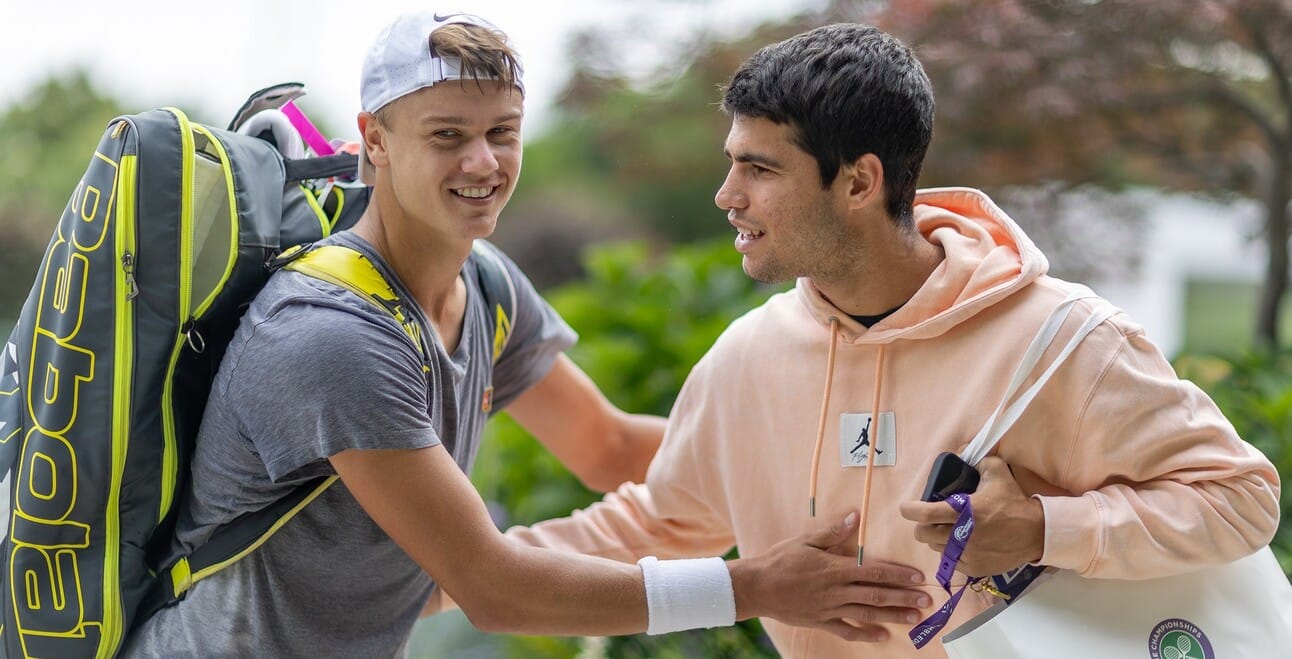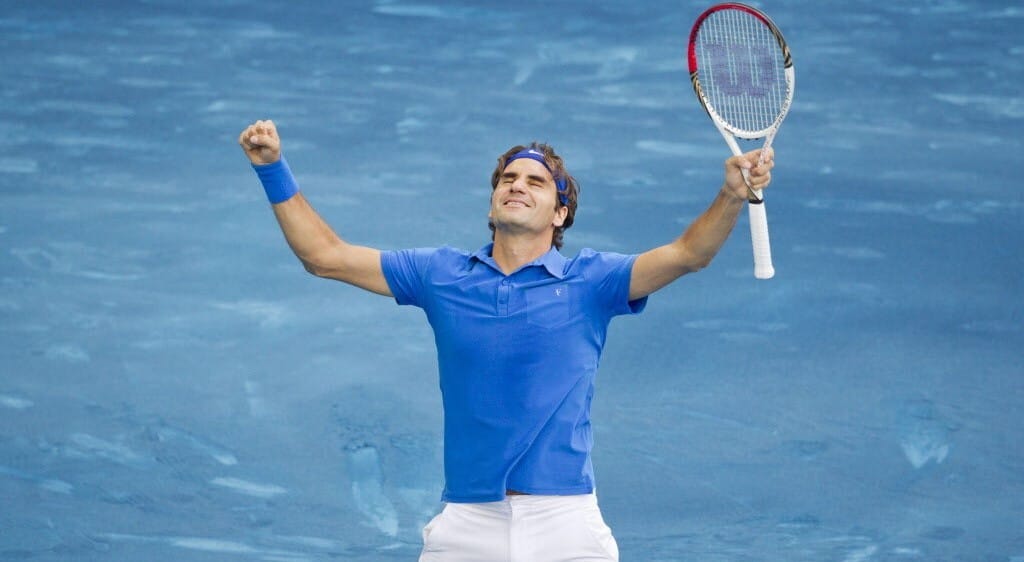
Happy Tuesday! Childhood friends Holger Rune and Carlos Alcaraz added another chapter to their growing rivalry in the Barcelona final, continuing a journey that began long before their pro careers.
In this week's newsletter:
👶 The Alcaraz-Rune Story: From Les Petits As to Grand Stage
🎾 Weekly Roundup: Controversies & Records
⏪ Throwback Tuesday: When Madrid’s Clay Got the Blues
🧠 Tennis Trivia Challenge 🧠
Think you know your tennis? Take a swing at this week’s question! Difficulty: Hard
A European player has won each of the past 16 editions of the Madrid Open in men's singles. Who was the last non-European to win the title, doing so in 2007?
👶 The Alcaraz-Rune Story: From Les Petits As to Grand Stage 👶

Image: Tennis.com
Born just six days apart in May 2003, Holger Rune and Carlos Alcaraz share more than a birth week. As Alcaraz recalled before this year’s Barcelona final, they “crossed paths in every tournament played since little.” Their camaraderie evolved through countless junior competitions, culminating in a 2017 doubles partnership at Les Petit As, a prestigious youth tournament in France. Their shared youth experiences laid the foundation for one of tennis's most exciting young rivalries.
Their rivalry intensifies with each match on the ATP Tour. From their first meeting at the Next Gen ATP Finals to their 2023 Wimbledon quarterfinal, Alcaraz built a 2-1 head-to-head advantage. But Rune leveled the score with a convincing 7–6, 6–2 win in Sunday’s Barcelona Open final, halting Alcaraz’s bid for a third title. Afterward, Alcaraz reflected: "We've been seeing each other since [we were] 12 years old. Time flies." Rune, now back in the top 10, said the title meant "the world" to him and praised the significance of beating his childhood friend.
The future promises more high-stakes battles between these childhood friends turned rivals. Both just 21, with complementary arsenals and contrasting styles, Rune and Alcaraz seem destined to contest many finals in the coming years and may well shape the sport’s next great rivalry.
🎾 Weekly Roundup: Controversies & Records 🎾

Image: The Athletic
Alexander Zverev celebrated his 28th birthday by defeating Ben Shelton 6-2, 6-4 in Munich, claiming his third title there. Elina Svitolina snapped a two-year title drought with a 6-4, 7-6(8) victory over Olga Danilović in Rouen, while Jelena Ostapenko finished her standout week by routing Aryna Sabalenka 6-4, 6-1 in Stuttgart.
Roland-Garros will honor Rafael Nadal with a special tribute on Court Philippe-Chatrier during the tournament’s opening day, May 25. Tournament director Amélie Mauresmo revealed Nadal declined the honor last year, unsure if it would be his final appearance. The Spaniard was also presented with the Laureus Sporting Icon Award yesterday in Madrid.
Sabalenka receives code violation after using a phone to snap a picture of a disputed ball mark during her Stuttgart quarterfinal win over Mertens. Sabalenka borrowed the device from her team after the umpire refused to reconsider an "out" call.
Harriet Dart sparks controversy by asking the umpire to tell opponent Loïs Boisson to "wear deodorant" during their match in Rouen. Boisson, who won 6-0, 6-3 in her return from ACL surgery, responded with a playful Instagram story showing herself holding photoshopped deodorant. Dove reposted it with the caption, "Smells like confidence." Dart has since apologized.
Diego Dedura-Palomero becomes the first player born in 2008 to win an ATP Tour match after Denis Shapovalov retired while trailing the 17-year-old German 7-6, 3-0 in Munich.
Jelena Ostapenko’s bizarre dominance over Iga Świątek continues with a 6-3, 3-6, 6-2 win in the Stuttgart quarterfinals, extending her head-to-head record to a flawless 6-0. Ostapenko’s aggressive style continues to confound the five-time major champion across surfaces.
ITIA sparks controversy with a policy requiring players remain "in full view" of chaperones while showering before doping tests. The directive follows WADA protocols but adds to scrutiny the organization already faces over recent handling of high-profile doping cases.
⏪ Throwback Tuesday: When Madrid’s Clay Got the Blues ⏪

Image: Associated Press
In 2012, the Madrid Open shocked the tennis world by unveiling blue clay courts.
Billionaire Ion Țiriac, tournament owner and former French Open doubles champion, implemented the change to make matches more TV-friendly. Much to his chagrin, the surface quickly drew criticism as players struggled with poor footing and inconsistent movement due to the surface’s slipperiness. Despite promises that it would play like red clay, it didn’t.
Top players pushed back. Rafael Nadal and Novak Djokovic threatened to skip future editions if the surface stayed. Nadal said plainly, "Next year this will be one less event for my calendar." Roger Federer and Serena Williams adapted successfully, winning the singles titles.
The experiment lasted just one year before reverting to traditional red clay, leaving blue clay as a failed innovation remembered primarily for controversy.


